model
Type of resources
Topics
INSPIRE themes
Keywords
Contact for the resource
Provided by
Years
Formats
Representation types
Update frequencies
status
-

Digital Elevation Model (DEM) from 1280 to 2120 water depth at 40 meters resolution. Bathymetric surface collected during the oceanographic cruise JAMMEGAIA22 on board of the R/V GAIA BLU by CNR.
-

nessuno
-

La carta batimorfologica dell’Adriatico Settentrionale che include anche le lagune di Venezia e di Grado e Marano ed è il risultato di una collaborazione tecnico-scientifica tra vari Enti, tra cui il CNR e l’IIM (Istituto Idrografico Militare). La carta è composta da un corpo principale che illustra il modello di elevazione dei fondali marini (risoluzione di 200m) derivato dall’integrazione di tutti i dati acquisiti con ecoscandagli a fascio singolo (single-beam) con una esagerazione verticale di 30x, necessaria ad evidenziare le principali caratteristiche geomorfologiche della piattaforma Nord Adriatica. La carta batimetrica include una serie di poligoni blu (key map) che illustrano la copertura dei dati a maggiore risoluzione raccolti con ecoscandaglio multifascio (Multibeam) acquisiti dal CNR ISMAR, IGAG e dall’IIM, sia lungo costa che in mare aperto, dal 2005 ad oggi. Il rilievo Multibeam della laguna di Venezia, include le tre bocche di porto di Venezia, Chioggia e Malamocco (Madricardo et.al, 2017) è stato integrato al dato Singlebeam, visibile nel corpo carta principale. A destra del corpo carta sono state realizzate sei carte batimetriche ad alta risoluzione che evidenziano i rilievi Multibeam condotti nel porto di Ravenna, alla foce del Fiume Po (Po di Pila) nelle Lagune di Venezia (Laguna Nord e bocca di porto di Chioggia), nel porto di Trieste, nell’area off-shore Ravenna (depositi di sabbie relitte attribuite a depositi trasgressivi). La cartografia è visibile attraverso il WebGIS o scaricabile direttamente al link indicato di seguito.
-
Acoustic backscatter data collected through the use of a Reson SeaBat 7125 high-resolution multibeam system
-
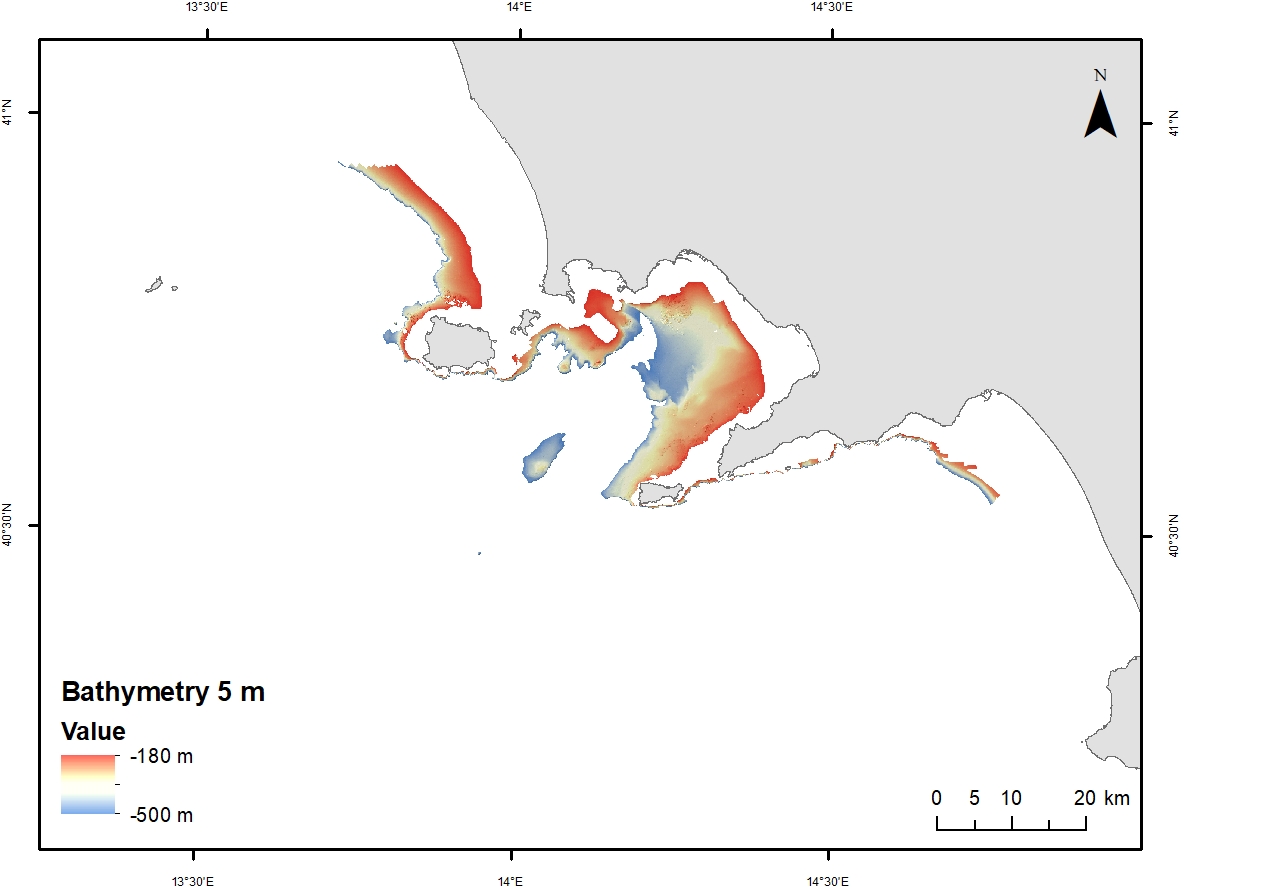
Digital Elevation Model (DEM) from 100 to 200 m water depth with a spatial resolution of 5 m. Bathymetric surface collected during the oceanographic cruise JAMMEGAIA22 on board of the R/V GAIA BLU by CNR.
-
Digital Elevation Model (DEM) at 102x102 meters cell resolution showing the topography and the water depth of the CORSUB study area.
-
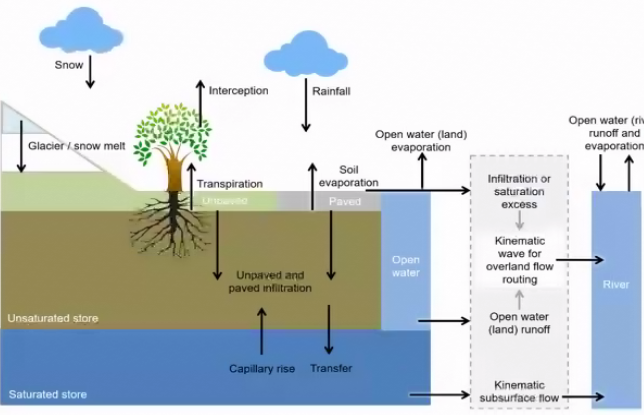
A bubble Barrier that removes litter from rivers is being applied in the Ave estuary (Portugal) in the framework of the MAELSTROM Project. In order to identify the location where the technology could possibly best be applied and to assess the impact of the litter removal on marine life, MAELSTROM makes use of numerical models. Facing the limited field data and absence of available models, we carried out field campaigns, set-up a hydrological model for the Ave river basin and set-up a hydrodynamic model for the estuarine region. The hydrodynamic numerical model for the Ave estuary was implemented using D-Flow Flexible Mesh (D-Flow FM), which is the hydrodynamic module of the Delft3D Flexible Mesh Suite developed by Deltares (for more information see the project deliverable D2.2 Numerical modelling and field campaigns to support litter removal at the demo sites).
-
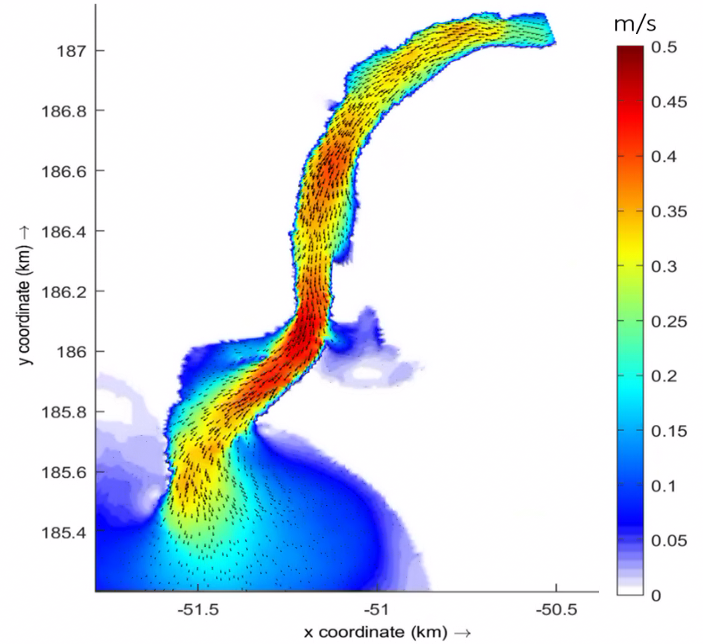
A bubble Barrier that removes litter from rivers is being applied in the Ave estuary (Portugal) in the framework of the MAELSTROM Project. In order to identify the location where the technology could possibly best be applied and to assess the impact of the litter removal on marine life, MAELSTROM makes use of numerical models. Facing the limited field data and absence of available models, we carried out field campaigns, set-up a hydrological model for the Ave river basin and set-up a hydrodynamic model for the estuarine region. The hydrodynamic numerical model for the Ave estuary was implemented using D-Flow Flexible Mesh (D-Flow FM), which is the hydrodynamic module of the Delft3D Flexible Mesh Suite developed by Deltares (for more information see the project deliverable D2.2 Numerical modelling and field campaigns to support litter removal at the demo sites).
-
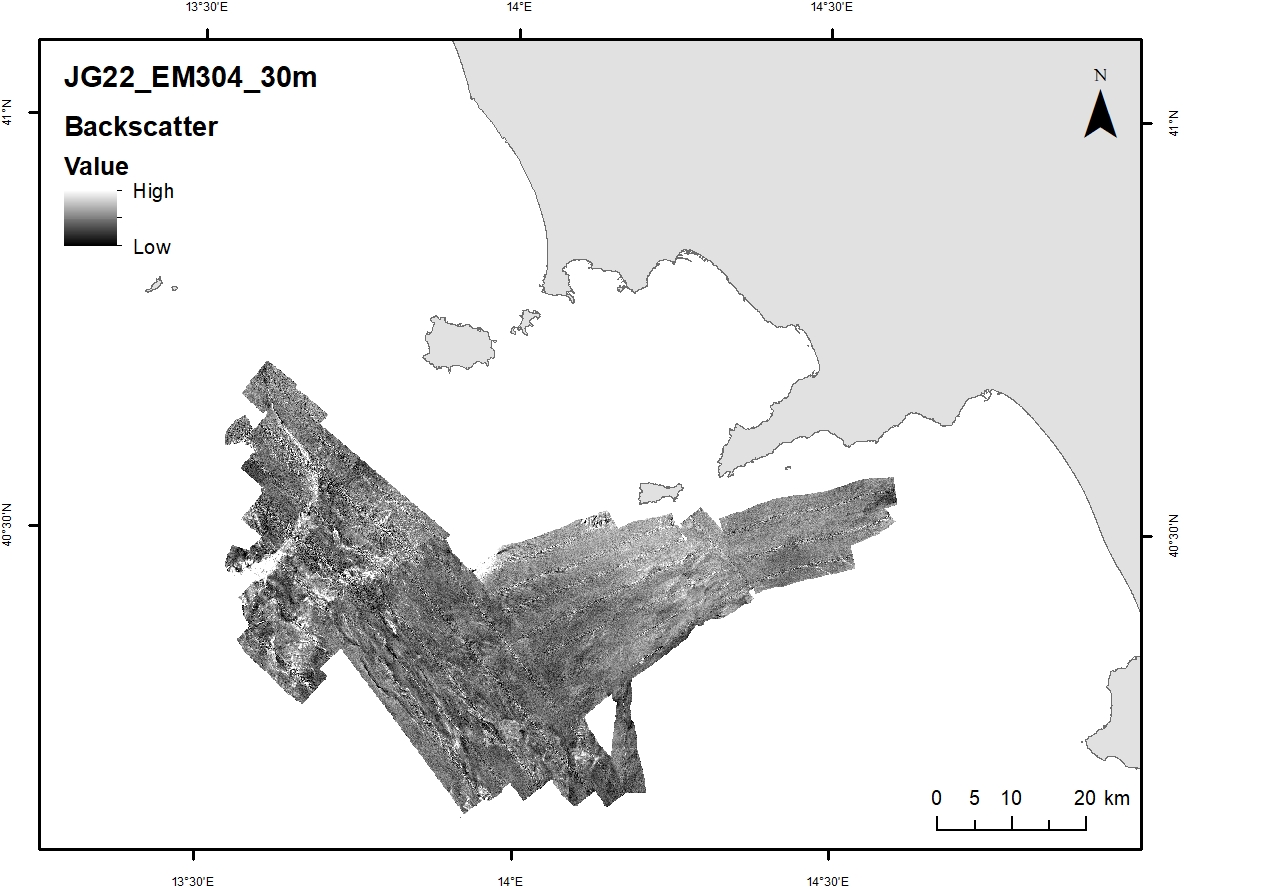
Acoustic reflectivity data (multi beam backscatter) collected during the oceanographic cruise JAMMEGAIA22 on board of the R/V GAIA BLU by CNR.
-
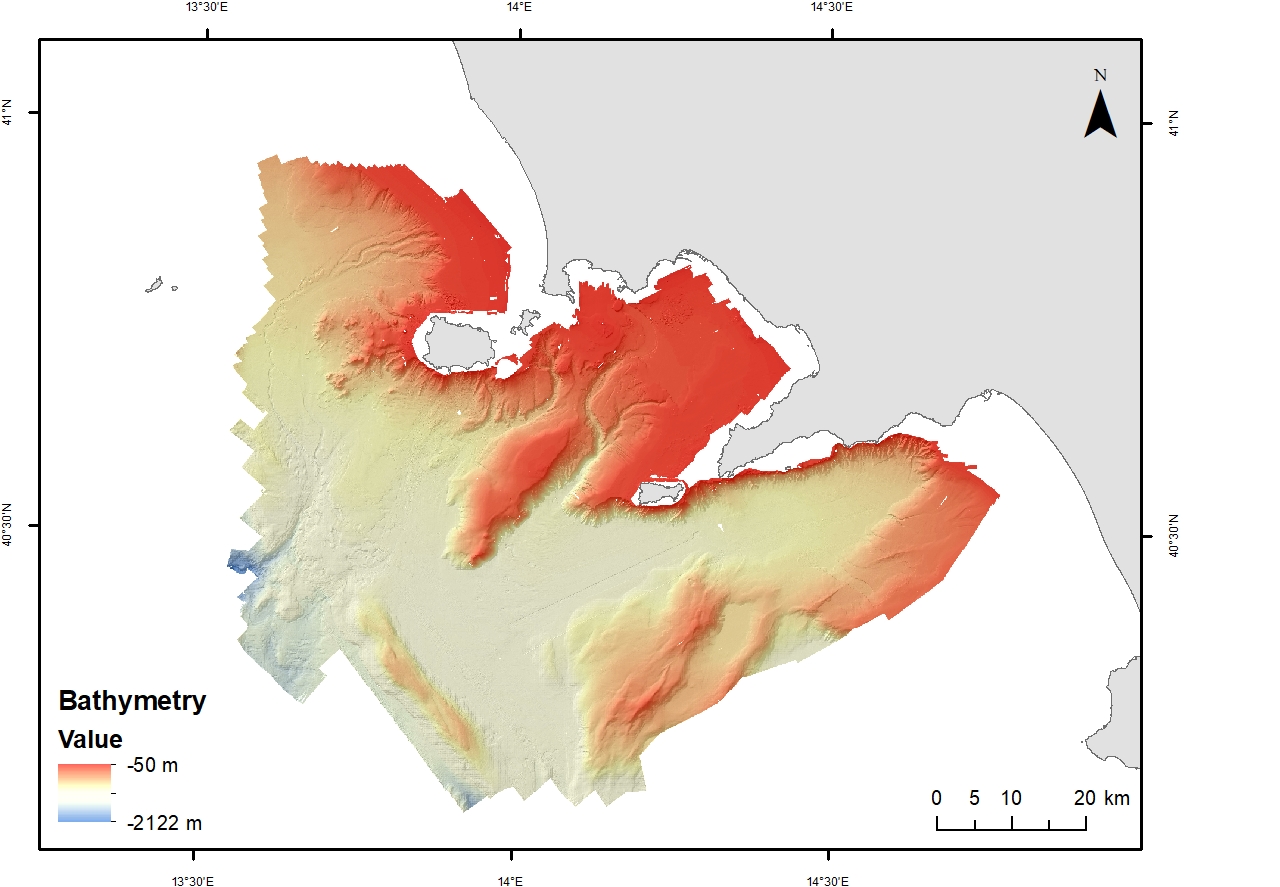
Bathymetric surface collected during the oceanographic cruise JAMMEGAIA22 on board of the R/V GAIA BLU by CNR. Spatial resolution 20 m.
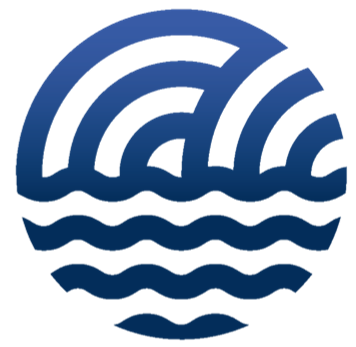 CNR-ISMAR
CNR-ISMAR